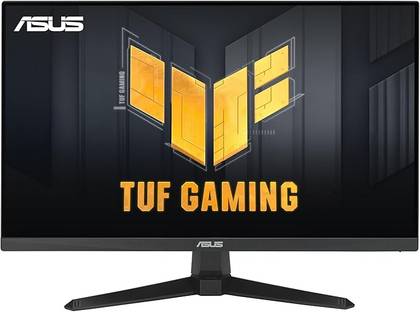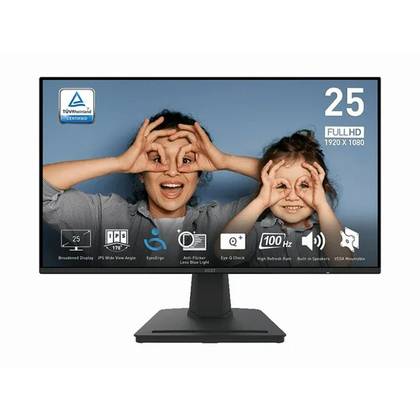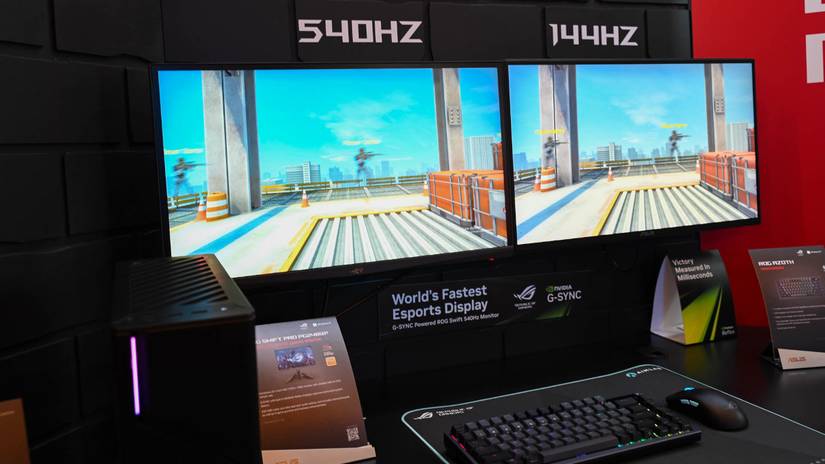
summary
-
I got a secondary 100Hz monitor, and it’s smoother than my old 60Hz monitor.
-
100Hz hits the sweet spot, as it’s noticeably smoother than 60Hz while still being affordable.
-
Even for a secondary monitor, you should probably avoid 60Hz unless you find a cheap used monitor.
I used to think that refresh rate was only important for gaming. My secondary display was only there to show static text, while I used everything with a 240Hz, 1440p primary display. However, I decided to spend a little extra to get a secondary 100Hz display, and now I’m glad I did.
There’s little reason to buy a 60Hz monitor anymore
Before we dive in, here’s a quick explanation for those of you who aren’t familiar with the term “refresh rate.” It refers to the number of times the screen refreshes its contents per second (to keep things simple, let’s assume that the frame rate per second equals the refresh rate).
A 60Hz display refreshes 60 times per second, while a 100Hz display refreshes 100 times per second. That’s why a higher refresh rate results in smoother motion and animation.
To be honest, I think 60Hz displays are slowly becoming a thing of the past, and that’s a great thing. Depending on where you shop for monitors, you may not even find 60Hz monitors anymore, as they are largely replaced by higher refresh rate models, even in the business sector.
I browsed some monitors on Amazon and had to scroll a bit to find a 60Hz monitor – SAMSUNG LC24F390FHNXZA. Ironically, its feature set doesn’t match its price at all, so it’s likely an older model that it never managed to sell.
Realistically, when you’re browsing Amazon, Walmart, Best Buy, or any other online storefront, you’ll likely encounter refresh rates of at least 100Hz. Even when you do find 60Hz monitors, they’re usually only $10 to $20 cheaper, so it’s not exactly a bargain.
It makes more sense to spend a little extra on one of these affordable high refresh rate displays and use it as a secondary display, rather than struggle with a choppy 60Hz panel for years.
Deep discount gaming monitors are usually the best deal, as they can offer refresh rates of 144Hz or more, along with additional features for the same price as a standard business monitor. Some good examples I would consider for a secondary monitor are the ASUS TUF VG249QE5A, the Philips 241V8LB, and the ASUS VA249HG.

- Brand
-
Asus
- Screen size
-
24″
The ASUS TUF Gaming VG249QE5A is an ideal 24-inch secondary monitor, offering a 1080p IPS panel with a 144Hz refresh rate. If you’re on a tight budget, it can serve as your primary gaming monitor, thanks to its smooth refresh rate and 1ms response time.
The only reason you should consider purchasing a secondary monitor with a 60Hz refresh rate is because you can find a used monitor locally for a very low price. I personally charge the max at around $40 for a used monitor, as you can never tell its age or condition. To me, it makes sense to spend $100 on a new high refresh rate unit and use it for years as a secondary monitor.
100Hz is the right balance between cost and smoothness
After my old secondary monitor, which I’ve been using for 15 years, caught fire last year, I’ve been casually looking for a replacement for the past few months.
I wasn’t sure if I should get a used 60Hz monitor for cheap, because that was one of the things that always bothered me about my old secondary monitor. It was a 19-inch, 1440 x 900 display set up next to a 1080p, 140Hz display at the time, and the transition between the two always seemed poor. Now that I had a 240Hz monitor, I knew that going from 240Hz to 60Hz when moving windows would be more difficult.
That’s why I decided to pay a little more for a high-quality monitor that comes with a warranty and is likely to last for many years. I finally stumbled upon it MSI PRO MP252. I had a list of fairly basic requirements, and this monitor ticked all the boxes: at least 24-inch size, IPS panel, 100Hz+ refresh rate, DisplayPort and HDMI connectivity, and a VESA mount so I could attach it to a monitor arm. At under $100, I considered it a fair price, especially since many of the gaming monitors I looked at didn’t have a VESA mount, which was a deal breaker for me.

- Brand
-
MSI
- Screen size
-
25″
The MSI PRO MP252 is a 24.5-inch business monitor with a 1920 x 1080 resolution and a 100Hz refresh rate. It supports adaptive sync, is VESA mountable, has built-in speakers, and includes several eye-care features to help protect your vision.
The moment I set up my new monitor, I knew I made the right choice. I tried the classic refresh rate test, where I dragged the window up and down across both displays, and while I was able to notice a difference between the two displays, it wasn’t as dramatic as you might expect given the gap between 100Hz and 240Hz.
In fact, I can barely tell the difference between my 120Hz TV and my 240Hz monitor in non-competitive gaming, so using the 100Hz monitor for everyday Windows tasks is more than enough.
I know 100Hz doesn’t sound like a lot, but it actually is – 100Hz is 66.7% faster than 60Hz, a difference that almost anyone can feel. It makes using any modern computer smoother. Even if the average person can’t say exactly Why Their computers look smoother thanks to the high refresh rate display, and they’ll notice the difference.
Surprisingly, what bothered me the most was the 1080p screen resolution, as I’m used to my 1440p screen. However, given the significantly higher prices of 1440p displays, it’s not something I’m willing to spend the extra money on for a secondary monitor.
Whether you buy a primary or secondary monitor, make sure it has a high refresh rate. Unlike other gamer-focused features like Low Latency or Adaptive Sync, the high refresh rate can be observed even during basic web browsing or daily tasks. It’s definitely worth spending a few extra bucks on!

